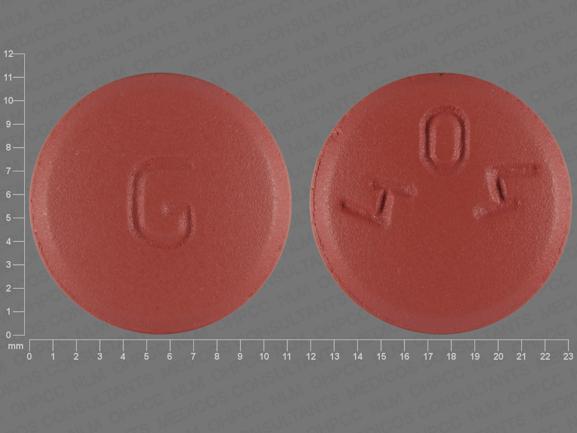Atovaquone / Proguanil Dosage
Medically reviewed by Drugs.com. Last updated on Nov 10, 2023.
Applies to the following strengths: 250 mg-100 mg; 62.5 mg-25 mg
Usual Adult Dose for:
Usual Pediatric Dose for:
Additional dosage information:
Usual Adult Dose for Malaria
1 g atovaquone/400 mg proguanil (four adult strength tablets as a single dose) orally once a day for 3 consecutive days
Usual Adult Dose for Malaria Prophylaxis
Prophylactic therapy should start 1 or 2 days before entering a malaria-endemic area and continued daily during the stay and for 7 days after return.
250 mg atovaquone/100 mg proguanil (one adult strength tablet) orally once a day
Usual Pediatric Dose for Malaria
Less than 5 kg ABW (actual body weight): Safety and efficacy has not been established.
5 to 8 kg ABW: 125 mg atovaquone/50 mg proguanil (2 pediatric tablets) once daily for 3 consecutive days.
9 to 10 kg ABW: 187.5 mg atovaquone/75 mg proguanil (3 pediatric tablets) once daily for 3 consecutive days.
11 to 20 kg ABW: 250 mg atovaquone/100 mg proguanil (one adult strength or four pediatric tablets as a single dose) orally once a day for 3 consecutive days
21 to 30 kg ABW: 500 mg atovaquone/200 mg proguanil (two adult strength tablets as a single dose) orally once a day for 3 consecutive days
31 to 40 kg ABW: 750 mg atovaquone/300 mg proguanil (three adult strength tablets as a single dose) orally once a day for 3 consecutive days
Greater than 40 kg ABW: 1 g atovaquone/400 mg proguanil (four adult strength tablets as a single dose) orally once a day for 3 consecutive days
Usual Pediatric Dose for Malaria Prophylaxis
Prophylactic treatment should start 1 or 2 days before entering a malaria-endemic area and continued daily during the stay and for 7 days after return.
11 to 20 kg ABW (actual body weight): 62.5 mg atovaquone/25 mg proguanil (one pediatric tablet) orally once a day
21 to 30 kg ABW: 125 mg atovaquone/50 mg proguanil (two pediatric tablets as a single dose) orally once a day
31 to 40 kg ABW: 187.5 mg atovaquone/75 mg proguanil (three pediatric tablets as a single dose) orally once a day
Greater than 40 kg ABW: 250 mg atovaquone/100 mg proguanil (one adult strength tablet) orally once a day
Renal Dose Adjustments
No dosage adjustment necessary in patients with CrCl greater than or equal to 30 mL/min
For patients with CrCl less than 30 mL/min, atovaquone-proguanil is contraindicated for prophylaxis of plasmodium falciparum malaria.
It may be used with caution for the treatment of malaria in patients with severe renal impairment (CrCl less than 30 mL/min), only if the benefits of the 3-day regimen outweigh the potential risks associated with increased drug exposure.
Liver Dose Adjustments
No dosage adjustments recommended in patients with mild to moderate hepatic impairment.
Data not available for patients with severe hepatic impairment.
Dose Adjustments
Dosage adjustment based on body weight is necessary in pediatric patients.
Precautions
Atovaquone-proguanil is contraindicated for use in the treatment prophylaxis of plasmodium falciparum malaria in patients with severe renal impairment (CrCl less than 30 mL/min).
Rarely, cases of anaphylaxis following treatment with atovaquone-proguanil have been reported.
Atovaquone-proguanil has not been evaluated for the treatment of cerebral malaria or other severe manifestations of complicated malaria, including hyperparasitemia, pulmonary edema, or renal failure. Patients with severe malaria are not candidates for oral therapy.
Elevated liver function tests and rare cases of hepatitis have been reported with prophylactic use of atovaquone-proguanil. A single case of hepatic failure requiring liver transplantation has also been reported with prophylactic use.
Absorption of atovaquone may be reduced in patients with diarrhea or vomiting. If atovaquone-proguanil is administered to patients who are vomiting, parasitemia should be closely monitored and the use of an antiemetic considered. In patients with severe or persistent diarrhea or vomiting, alternative antimalarial therapy may be required.
Parasite relapse has occurred frequently when Plasmodium vivax was treated with atovaquone-proguanil alone.
In the event of recrudescent Plasmodium falciparum infections after treatment or failure of chemoprophylaxis with atovaquone-proguanil, patients should be treated with an alternative blood schizonticide.
Clinical studies of atovaquone-proguanil did not include sufficient numbers of patients aged 65 and over to determine whether they respond differently from younger patients. In general, dose selection for elderly patients should be cautious, reflecting the greater frequency of decreased hepatic, renal, or cardiac function, the higher systemic exposure to cycloguanil, and the greater frequency of concomitant disease or other drug therapy.
Dialysis
Data not available
Other Comments
The daily dose should be taken at the same time each day with food or a milky beverage to enhance absorption. If vomiting occurs within one hour after administration, a repeat dose should be taken.
Malaria chemoprophylaxis should be administered with other preventive measures including the use of protective clothing, insect repellents, and bednets.
More about atovaquone / proguanil
- Check interactions
- Compare alternatives
- Pricing & coupons
- Reviews (48)
- Drug images
- Side effects
- During pregnancy
- Drug class: antimalarial combinations
- En español
Patient resources
Other brands
Professional resources
Other brands
Related treatment guides
Further information
Always consult your healthcare provider to ensure the information displayed on this page applies to your personal circumstances.

